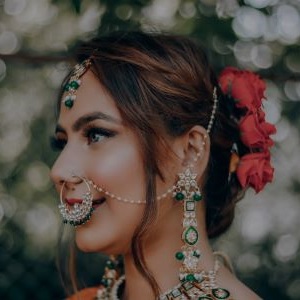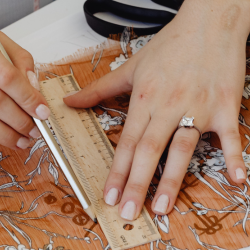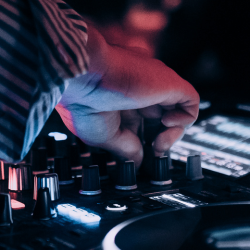Flower photography is a beautiful way to capture the colours, textures, and delicate details of nature. Whether it’s a single bloom or an entire garden in full bloom, flowers offer endless inspiration for both beginners and experienced photographers. With the right techniques—and by exploring different types of photography courses—you can turn a simple flower into a stunning work of art.
Here in this blog, you will learn all that you need to begin snapping stunning flower pictures. We shall discuss what is flower photography, the equipment you’ll require, helpful techniques to improve your images, creative tips to experiment with, and additional tips to enable you to maximize every flower moment. If you’re just starting out, exploring photography courses can also help you build a solid foundation.
Table Of Content
- What is Flower Photography?
- Essential Equipment for Flower Photography
- Flower Photography Techniques
- Creative Ideas for Flower Photography
- Editing and Post-Processing Flower Images
- Common Challenges and How to Overcome Them
- Inspiration and Flower Photography Ideas
- FAQs
- What are the best tips for capturing beautiful flower photography?
- What is the best time of day for flower photography?
- Do I need a macro lens for flower photography?
- How do I photograph flowers without harsh shadows?
- What settings should I use for close-up flower shots?
- Can I shoot flower photos with a smartphone?
- How do I make my flower photos stand out on social media?
What is Flower Photography?
Flower photography is one of the types of nature photography that is all about capturing the aesthetics, colour, and form of different flowers. It may vary from close-up where you enhance the minute details of petals and textures of flower towards the broader aspect where you depict flowers in natural or creative contexts. Be it the garden, the field, or indoors, flower photography gives you the opportunity to express both of the creativity and technical expertise while enjoying the marvels of nature. It’s also closely connected to styles like macro flower photography, flower still life photography, and even flower nature photography, offering endless possibilities for visual storytelling for your photography.
The Art Behind Capturing Flowers
Capturing flowers is not just pointing and clicking—it’s recognizing light, noticing the little things, and expressing emotion through every shot. Every flower possesses a personality just like humans, and a well-framed photo can express a message, evoke a feeling, or merely capture the beauty of nature from the Lense. From dainty petals to bright colours, flower photography is an artistic blend of creativity and skill with a persons camera, a fulfilling and expressive art of visual expression through lenses.
Why It’s Popular Among Beginners and Professionals
Flower photography is a delight for amateur and professional photographers alike because it’s so easy and endlessly inspirational. Flowers are easy to find and work with for amateur photographers, easy to practice and develop basic skills with. Professionals love the challenge of finding creative compositions and experimenting with light, angle, and backgrounds. Whether it’s macro flower photography or flower still life photography, this genre offers a chance to grow creatively while staying connected to nature and learn more each day.
Essential Equipment for Flower Photography
Having the right gear can make a huge difference in the quality of your flower photography. From capturing tiny details to getting the perfect lighting, your equipment helps bring your creative vision to life. Here’s a closer look at the essentials.
Best Cameras and Lenses for Macro Shots
When it comes to flower photography, especially close-ups, a good camera and lens are key. DSLR and mirrorless cameras from brands like Canon, Nikon, or Sony offer great image quality and manual settings that allow you to control focus, exposure, and depth of field.
Macro lens is a requirement if you are going to shoot precise details such as the texture of flower petals or minute water droplets. 90mm to 105mm focal length lenses are the best for macro flower photographs since they allow you to photograph up close without disturbing the flower. There are also some compact cameras that include powerful macro modes, which is why beginners may find them suitable.
Tripods, Reflectors, and Other Helpful Tools
To get sharp, blur-free shots, especially in low light or for close-ups, a tripod is very useful gadget for any photographer. It helps keep your camera steady and lets you take your time to compose each shot perfectly with your precision.
Reflectors are great for bouncing natural light onto your subject, reducing harsh shadows and bringing out vibrant colours in your flower shots. You can also use diffusers to soften direct sunlight, which helps avoid overexposed highlights. A remote shutter release or using your camera’s timer can further reduce camera shake when shooting with a tripod.
Budget-Friendly Gear Recommendations
You don’t require costly equipment to begin flower photography. Most modern smartphones possess good cameras and macro features that allow beautiful flower photographs to be taken. Phone macro lenses can also be clipped onto your smartphone at low cost and improve your close-up photographs.
For tripods, slim and flexible ones such as the GorillaPod are inexpensive and portable. When it comes to reflectors and diffusers, you can even make them yourself with white paper, aluminium foil, or sheer fabric. You just want to get the best use of the light and the stability without having to spend too much money.
Flower Photography Techniques
Capturing beautiful flower photos isn’t just about having the right gear—it’s also about knowing how to use it. With the right techniques, you can turn simple blooms into stunning visual stories. Here are some tips to help you improve your flower photography skills.
Composition Tips for Eye-Catching Photos 
Good composition makes your flower photos more interesting and balanced. Start with the rule of thirds, where you place the flower slightly off-centre rather than in the middle of the frame. This creates a more dynamic look.
Experiment with angles—try shooting from above, the side, or even underneath the flower for a unique perspective. Filling the frame with the flower can highlight its details, while including some surrounding elements can add context. Remember to keep the focus sharp, especially if you’re doing macro flower photography.
Mastering Light and Exposure
One of the most critical aspects of flower photography or we can say in general photography is light. Natural, soft light—such as morning or late afternoon sun—is best as it minimizes harsh shadows and accentuates the flower’s natural colours in the photo.
Do not flash directly, as it can flatten the image and bleached out the colours. Instead, use a reflector to softly bounce the light, or a diffuser to soften harsh sunlight. Tweak your exposure settings according to the light source and experiment with camera with using manual mode to more closely control brightness and depth of field of the object while clicking.
Shooting Indoors vs Outdoors 
Both indoor and outdoor settings have their own advantages. Outdoor flower photography allows you to work with natural backgrounds, fresh blooms, and ever-changing light. Gardens, parks, and flower market photography spots are perfect for capturing vibrant scenes as required.
Indoor photography gives you more control over lighting and background. You can set up a mini studio with artificial lights, backdrops, and reflectors just the way you want. This works especially well for flower still life photography, where you want to create a calm, artistic vibe.
Using Backgrounds to Enhance Your Subject
A clean and simple background helps the flower stand out. Outdoors, use wide apertures (like f/2.8 or f/4) to blur out busy backgrounds and keep the focus on the flower. Indoors, use solid-colour backdrops or soft fabrics to add elegance and mood.
Avoid clutter or bright elements in the background that might distract from your subject. You can also try photography black and white flowers to create a minimalist, timeless look that puts full attention on shapes and textures.
Creative Ideas for Flower Photography
Once you’ve mastered the basics, it’s time to get creative. From experimenting with water droplets to exploring abstract forms, there are countless ways to add personality and uniqueness to your flower photos. These ideas will help you think outside the frame and take your shots to the next level.
Playing with Water Droplets and Bokeh Effects 
Water droplets can add a fresh, magical touch to your flower photos. You can spray a fine mist on petals using a water bottle or capture natural dew early in the morning. Pair this with a wide aperture to create a dreamy bokeh effect, where the background turns into soft, circular light patterns.
Abstract and Close-Up Floral Details 
Zooming in close allows you to explore the textures, shapes, and lines within a flower—perfect for creating macro flower photography with an artistic twist. Look for repeating patterns in petals, the spiral of a sunflower’s centre, or even a single curve that fills the frame.
These types of shots often lean towards abstract flower nature photography, where the subject may not even be immediately recognisable—but it’s beautiful nonetheless.
Capturing Seasonal Blossoms and Wildflowers
Each season brings a different floral story to tell. Spring offers colourful tulips and cherry blossoms, summer brings bright sunflowers and daisies, autumn adds rich tones with marigolds and chrysanthemums, while winter might surprise you with hardy blooms like camellias.
Don’t forget to explore fields, trails, or flower market photography locations to find a mix of fresh and natural floral scenes that reflect the time of year.
Also Read About: Nature Photography
Editing and Post-Processing Flower Images
Post-processing is where your flower photos truly come to life. A few careful adjustments can highlight the beauty of your shots while preserving the natural charm of the flowers. Whether you’re fine-tuning lighting or enhancing colours, editing gives you creative control over the final image.
Best Software for Editing Floral Photos
There are plenty of editing tools available for both beginners and advanced photographers. Adobe Lightroom is a popular choice for flower photography because it offers powerful features like colour correction, exposure control, and presets. Adobe Photoshop is ideal for more detailed editing, such as removing distractions or combining multiple exposures.
For beginners or mobile users, apps like Snapseed, VSCO, or Lightroom Mobile are great for quick yet professional-looking edits. These tools are especially useful when working with vibrant shots from flower nature photography sessions.
Enhancing Colors, Contrast, and Texture
Flower photos often benefit from slight adjustments in colour, contrast, and sharpness. Boosting the vibrancy can make petals look more lively without making them look unnatural. Increasing contrast and clarity helps bring out textures—like the veins on a leaf or the delicate folds of a rose.
Use sharpening tools carefully to enhance fine details, especially in macro flower photography, where even the smallest features matter. Avoid over-editing, which can make flowers look artificial.
Maintaining Natural Beauty During Edits
The aim of editing should be to improve and enhance—not change—the natural beauty of the flower. Try to keep colours true to life, especially if your image was taken outdoors. Use subtle adjustments to tone, brightness, and saturation to keep the overall look soft and realistic.
A gentle vignette can help draw attention to the flower without being too obvious. And if you’re exploring photography black and white flowers, focus on shadows and highlights to create mood and depth while keeping the floral structure intact.
Common Challenges and How to Overcome Them
Even with the best equipment and techniques, flower photography can come with its own set of hurdles. Here’s how to deal with a few common issues:
Dealing with Wind and Motion Blur
Outdoor shoots can be tricky when it’s windy. Use faster shutter speeds to freeze motion, and consider carrying a wind blocker or waiting for a calm moment. A tripod helps keep your camera steady in light breezes.
Focusing Accurately on Tiny Details
When shooting close-ups, it’s easy to miss focus. Use manual focus for better control, especially in macro shots. Focus stacking—combining multiple shots with different focus points—can also help create a sharp final image.
Handling Harsh or Low Lighting Conditions
Midday sun can cause overexposed highlights, while evenings may lack light. Shoot during golden hours, use diffusers to soften sunlight, or add reflectors. In low light, raise your ISO slightly and use a tripod to avoid blur.
Inspiration and Flower Photography Ideas
Looking for new ways to stay inspired? Here are a few simple yet powerful ideas:
Famous Flower Photographers to Follow
Photographers like Mandy Disher, Kathleen Clemons, and Jacky Parker are known for their unique styles in flower photography. Their work blends softness, detail, and mood—perfect sources of inspiration.
Top Locations for Floral Photography
Visit local gardens, botanical parks, or seasonal flower festivals. Even flower markets offer great backdrops and colours to explore. Don’t forget to check wildflower trails during spring or summer!
Projects and Challenges to Try at Home
Try capturing the same flower in different lighting conditions or do a series focused on flower still life photography. You can also experiment with black and white flower photography to explore mood and tone.
FAQs
1. What are the best tips for capturing beautiful flower photography?
Use natural light, focus on details, shoot from different angles, and choose simple backgrounds. A tripod helps avoid blur, and a shallow depth of field enhances your flower shots.
2. What is the best time of day for flower photography?
Early mornings or late afternoons provide soft, golden light. These hours reduce harsh shadows and strong highlights, and also offer calm winds—great for sharp, clear flower photography.
3. Do I need a macro lens for flower photography?
A macro lens is ideal for close-up detail but not essential. You can still capture stunning images with a standard lens or smartphone using good lighting and composition techniques.
4. How do I photograph flowers without harsh shadows?
Avoid shooting in direct sunlight. Use diffusers, shaded spots, or cloudy days for soft light. Reflectors can also help brighten shadows without making the photo look artificial.
5. What settings should I use for close-up flower shots?
Use aperture f/5.6–f/8 for sharpness and soft background blur. Keep ISO low for clarity and adjust shutter speed to prevent motion blur. A tripod adds stability.
6. Can I shoot flower photos with a smartphone?
Yes, smartphones work great. Use macro or portrait mode, tap to focus, and shoot in natural light. Avoid zooming too much to maintain clarity in your flower photos.
7. How do I make my flower photos stand out on social media?
Use vibrant colours, unique angles, and natural light. Edit lightly for contrast and clarity. Stick to a consistent theme or try creative ideas like flower still life photography.
























